Monday, 12:00pm
21 August 2023
Books received #54
Beer mats design; ‘how-to’ create interactive digital spaces; and Japanese-German cultural exchange project.
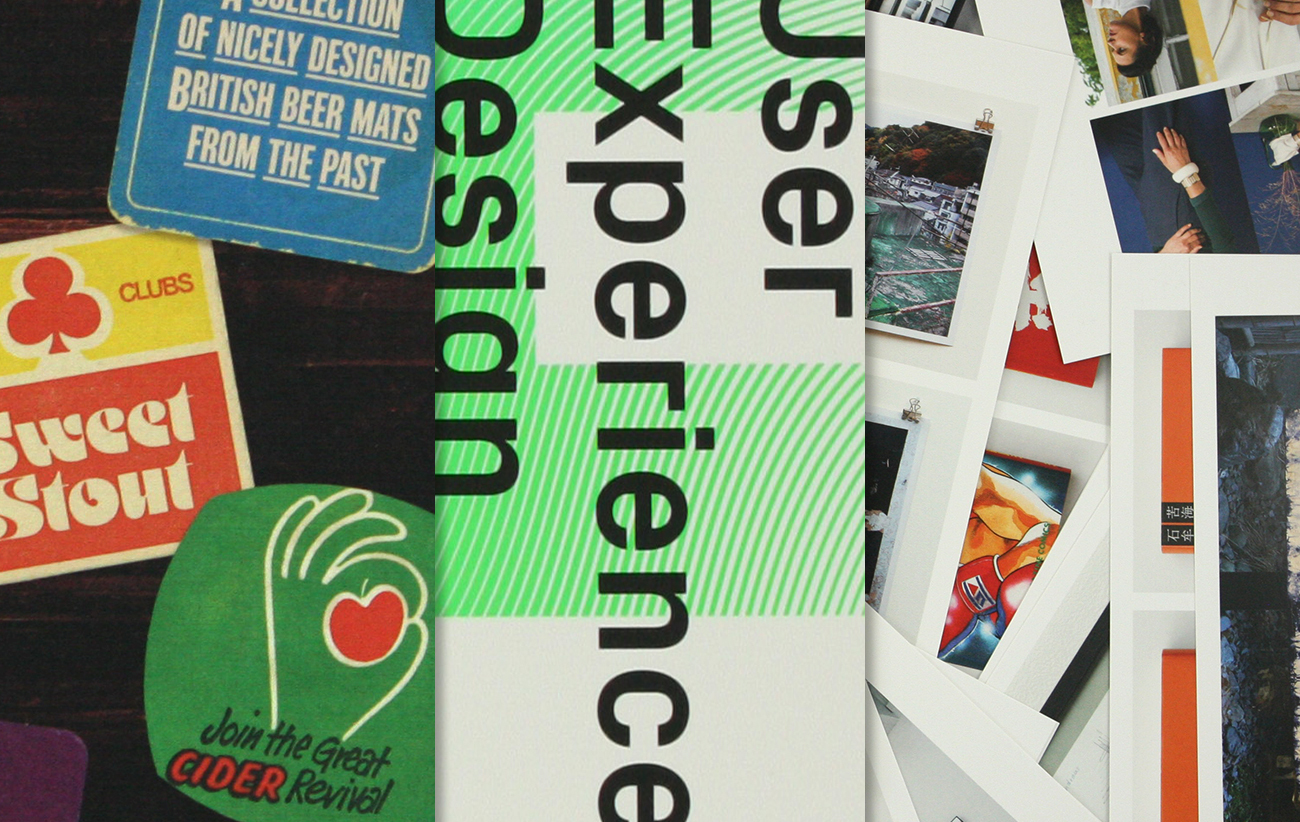
In the latest embodiment of our books received series, Eye looks at three different titles on graphic design and visual culture. We look at collection of vintage British beer mats, a beginner’s guide to UX, and a catalogue celebrating ten years of cultural exchange between Japan and Germany.
Beer Stained Pulp by Adam Kimberley, Unicorn Press
What started off as an Instagram account documenting ‘nicely designed beer mats from the past’ has resulted in a charming book published by Unicorn Press, titled Beer Stained Pulp – a collection of nicely designed British beer mats from the past. Norwich based graphic designer Adam Kimberley began his obsession of collecting beer mats at a young age, listing Kimberley Ales mat gifted by his sister as a catalyst. Organised into beverage chapters such as ‘lager’ and ‘bitter’ and topical categories like ‘travel’ or ‘sports’, the book is a curation of his own collection, with examples from as early as 1950.
These unassuming and often overlooked coasters, reveal captivating stories of breweries, iconic advertisements and cultural moments. Kimberley’s book elevates these beer mats from mere spill-catchers to visual treasures, showcasing their intricate designs, typography and illustration. The collection offers a fresh perspective on British visual history, reminding us of the beauty in everyday items and the significance of communal spaces like pubs.
Beer Stained Pulp (Unicorn Press) was written, curated and designed by Adam Kimberley.

Spread showcasing a selection of illustrative coasters from Guinness, 1961-1964.
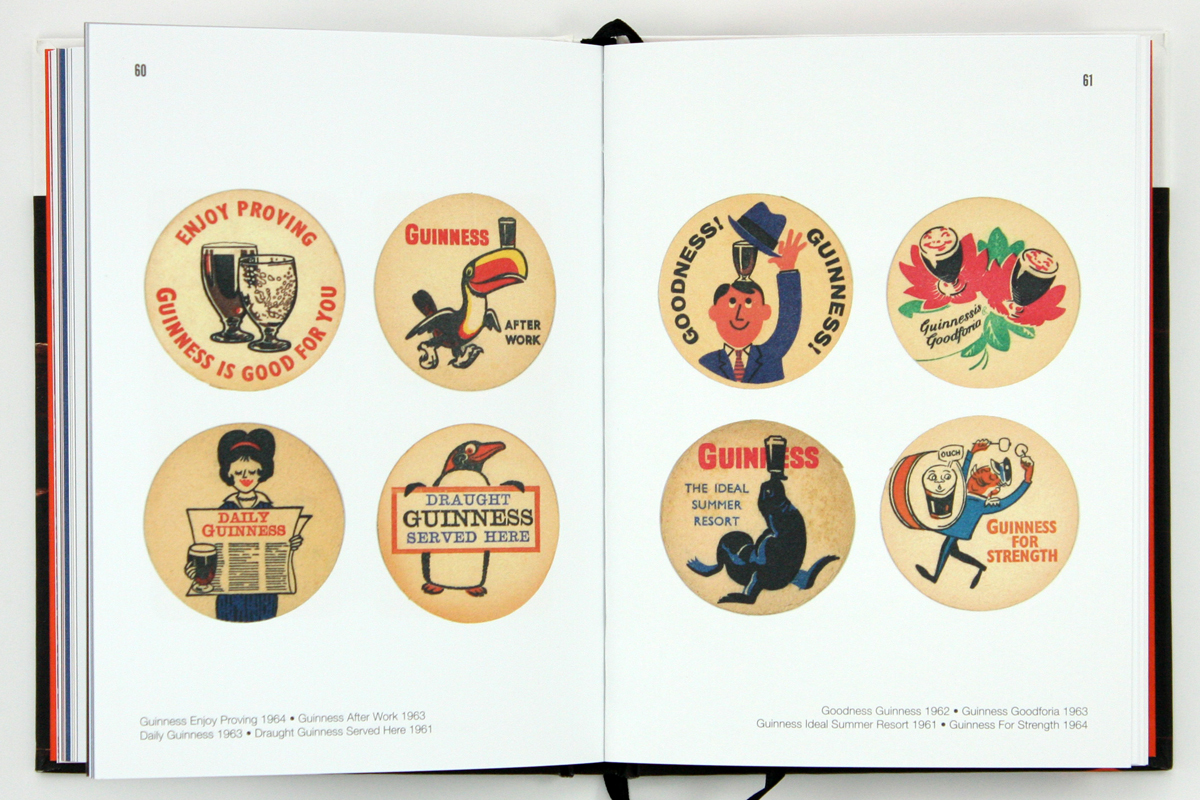
The book is divided into beverage-led and topical chapter. Displayed here are examples of beer mats of lagers, 1955-1978.
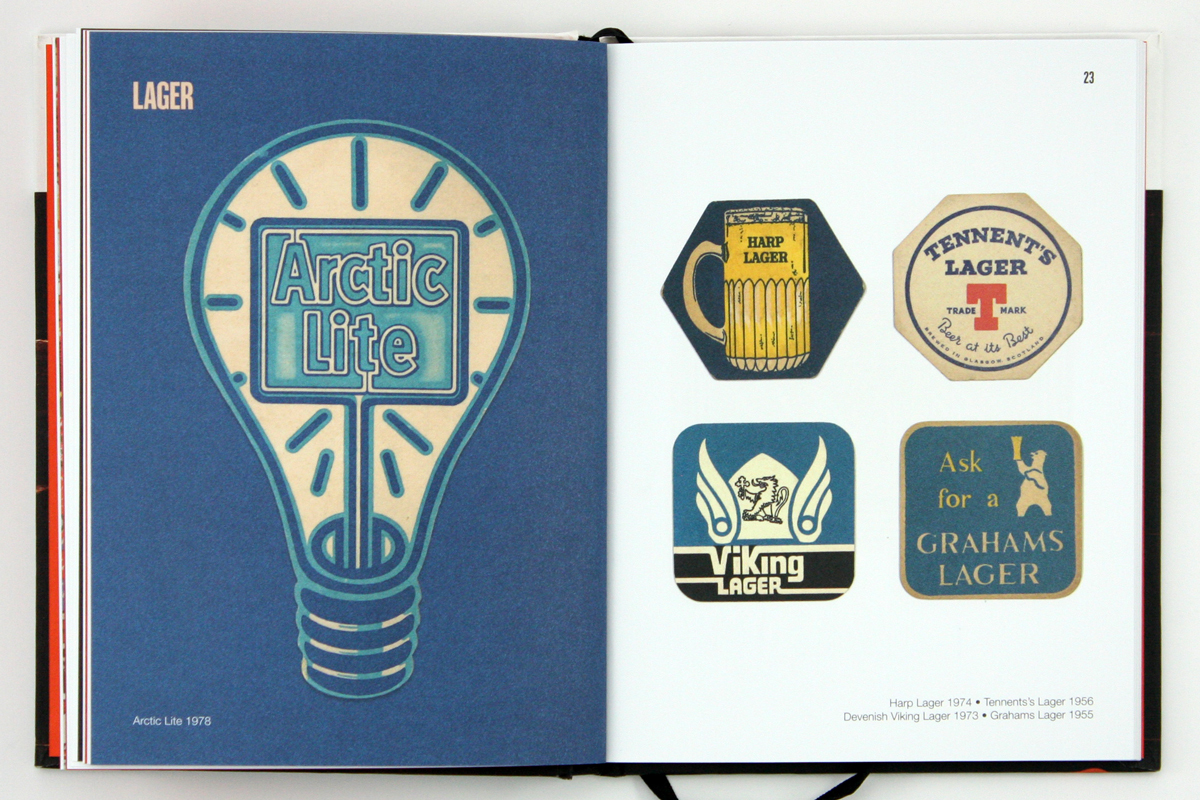
User Experience Design by Mark Wells, Laurence King Publishing
Recently published book by designer and lecturer Mark Wells is a handy introduction into the world of user interface and user experience design. Organised into three parts: methods and approaches; knowing your audience; and refining your product; the book covers core concepts and strategies of the basic UX design process. In the introduction, the author makes it clear that the book was devised with students and creatives in mind, with an aim to introduce more people to the UX process.
Punctuated with case studies, profiles and varied visual references, the book includes numerous step-by-step guides and to-the-point explanations. The projects featured within are not just digital interfaces, but also exhibitions, installations and infographics, which makes the content more accessible for a wider spectrum of readers. User Experience Design covers fundamental principles of the UX process without jargon or unnecessary details, making it a concise and easily digestible entry-level guide.
Cover of User Experience Design by Mark Wells, designed by Blok Graphic.

Spread featuring information design by W.E.B. DuBois (left), Dr John Snow (top right) and Florence Nightingale (bottom right). See also ‘Lady with the diagram’ in Eye 82.
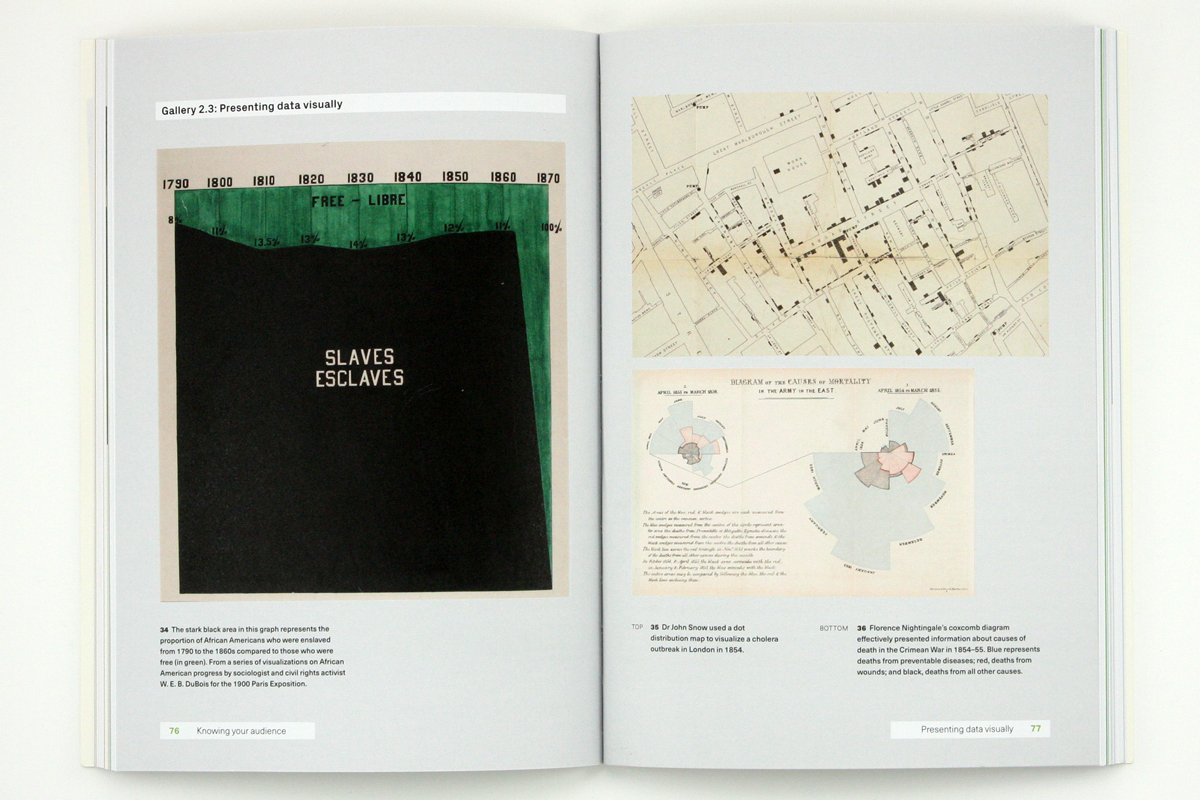
Case study of IBM Cloud PAL design system.
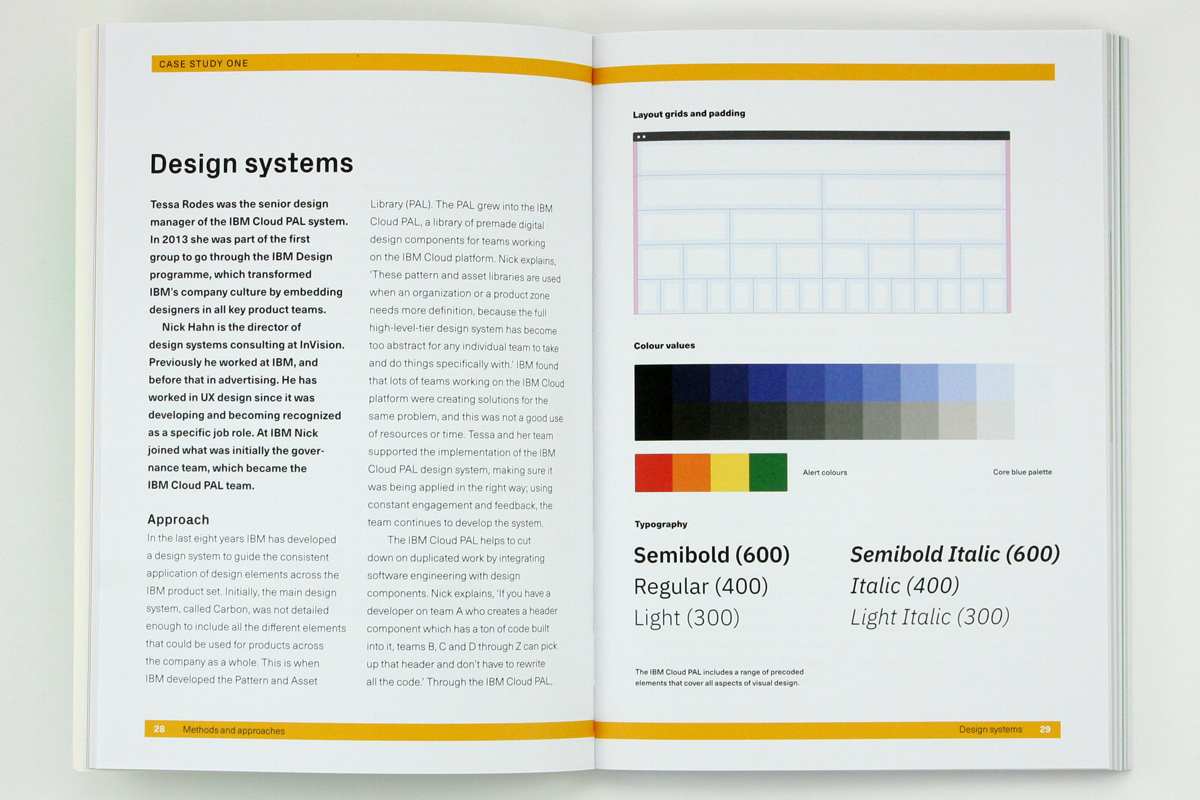
Tsunagu Mono Gatari – Verbindungsstücke, Wasmuth & Zohlen
Tsunagu Mono Gatari / Verbindungsstücke is a bilingual art catalogue published in celebration of the ten-year anniversary of the Goethe-Institut Villa Kamogawa artist residency program in Kyoto. This peculiar publication features works by 73 artists, each printed on an individual card, as well as a 60-page booklet, all held together within a double sleeve. Unlike many other bilingual publications, Tsunagu Mono Gatari / Verbindungsstücke holds both languages (German and Japanese) in the same regard. In other words, there is no ‘leading’ language but instead the design highlights the cooperative nature of the project.
Typographers Toshiya Izumo and Ferdinand Ulrich developed the multi-script design by embracing the various directions in which text can be read; top to bottom, left to right, and so on. As a result, the two languages typographically complement one another in a project that has already been recognised by several design awards. Aptly titled ‘connecting pieces’ (German: verbindungsstücke, Japanese: tsunagu mono gatari) the catalogue doubles as an exhibition of sorts, for which reader can curate the artworks as they please.
Letterpress cover sleeve set in Ribaasu by TienMin Liao, a multi-script typeface (currently unreleased) based on Latin, Japanese, and Chinese lettering.
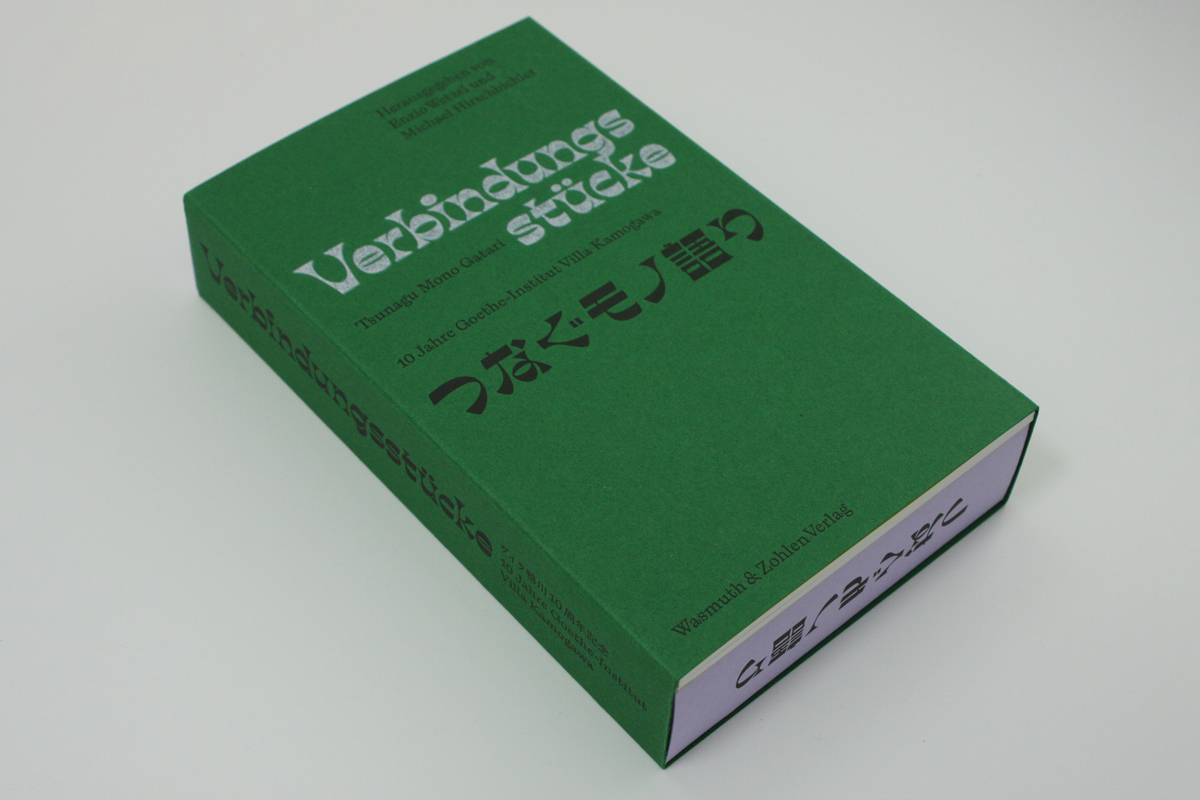
Artworks printed on 71 cards are supported by a 60-page booklet of essays.
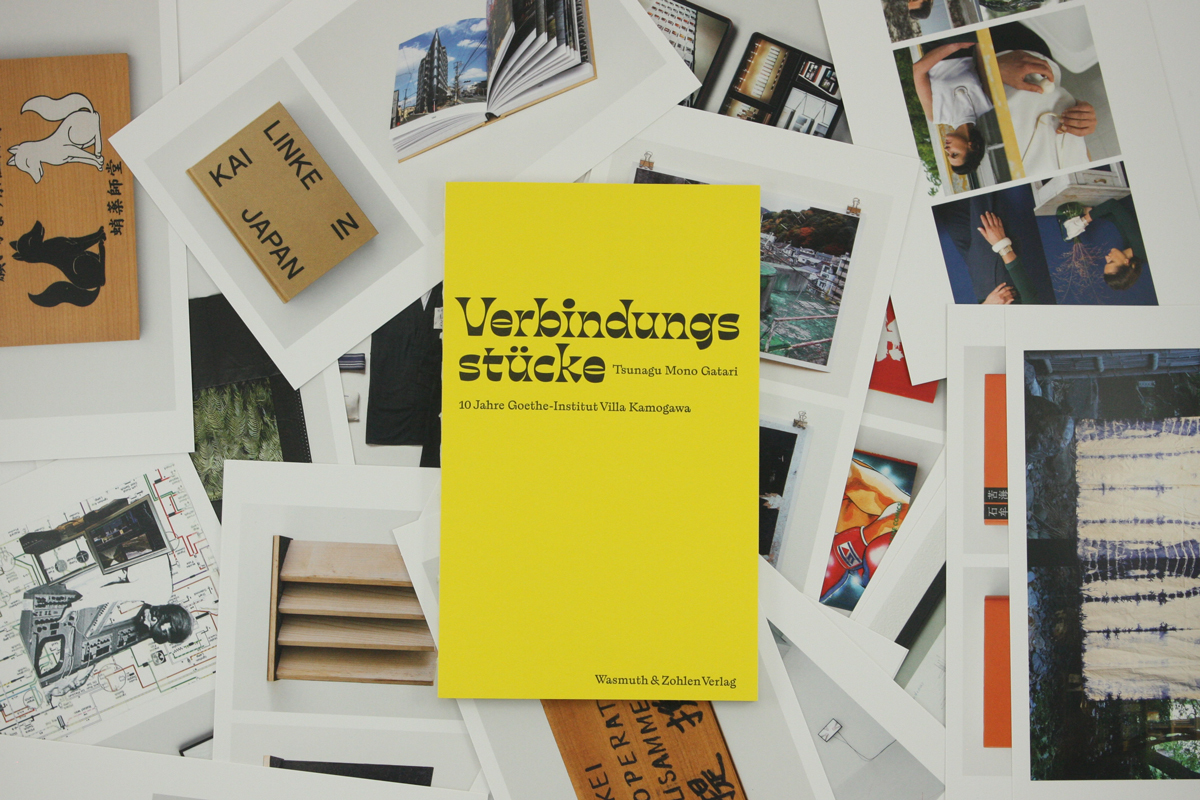
Central spread in which Japanese and German texts meet.
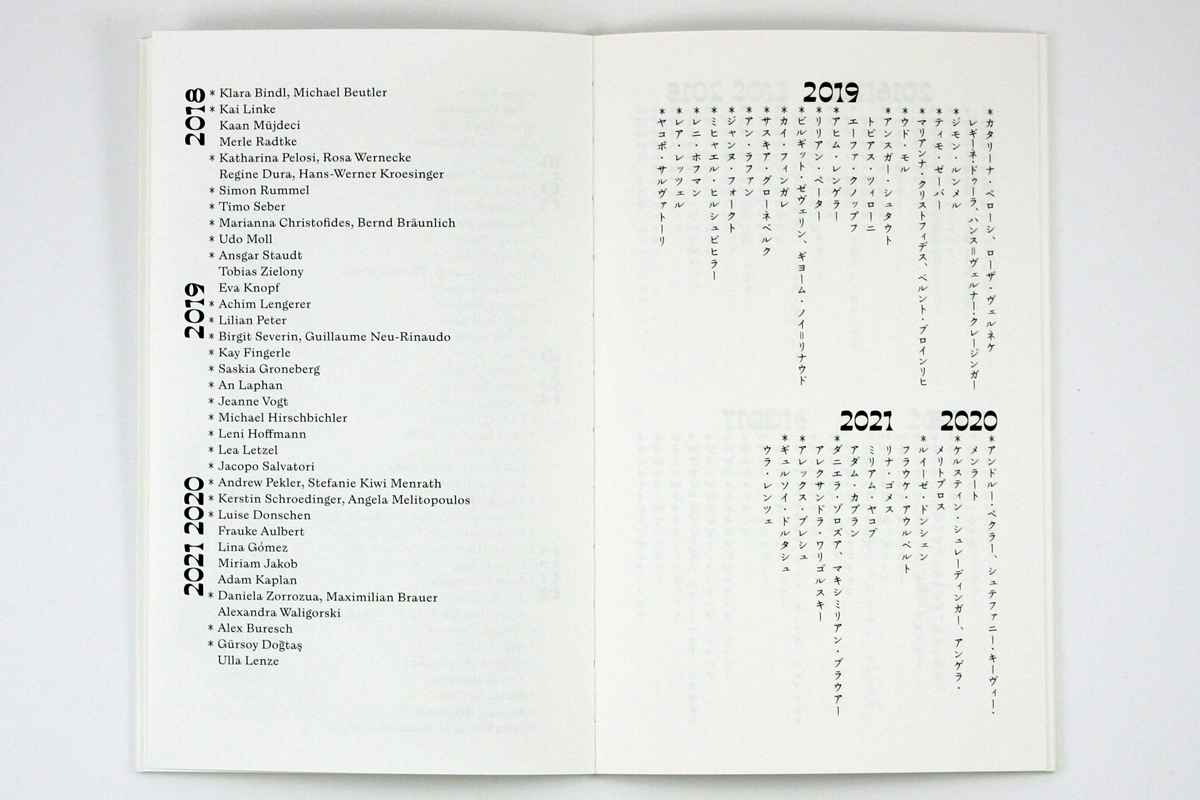
Eye is the world’s most beautiful and collectable graphic design journal, published for professional designers, students and anyone interested in critical, informed writing about graphic design and visual culture. It is available from all good design bookshops and online at the Eye shop, where you can buy subscriptions and single issues.
